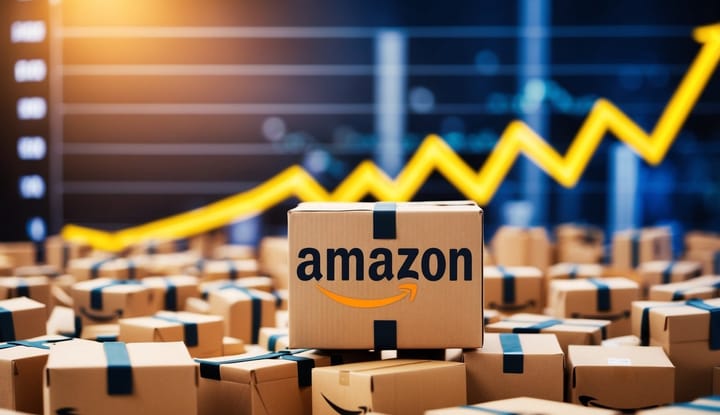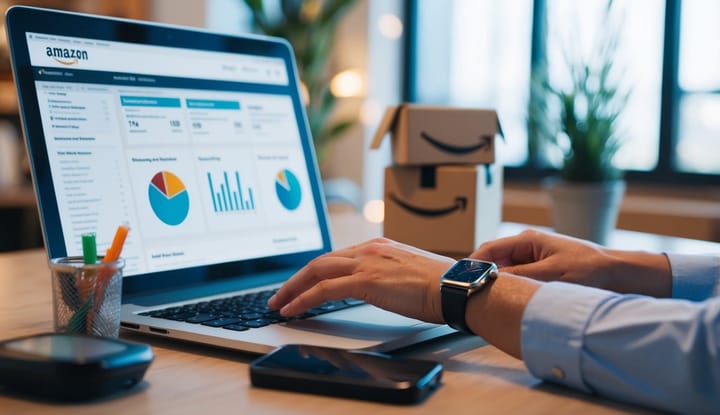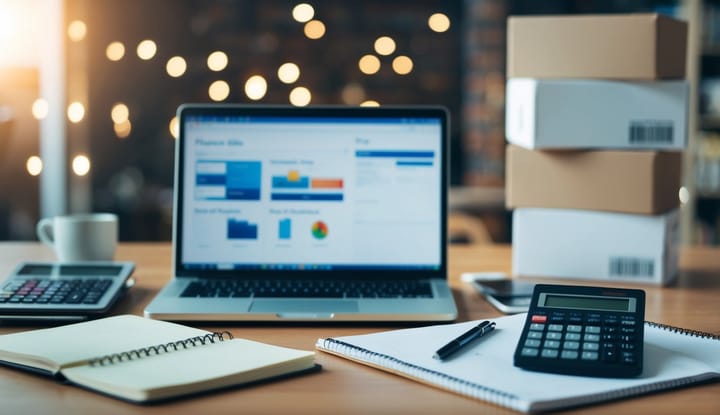Top Seller Questions: Essential FAQs for Amazon FBA You Need to Know
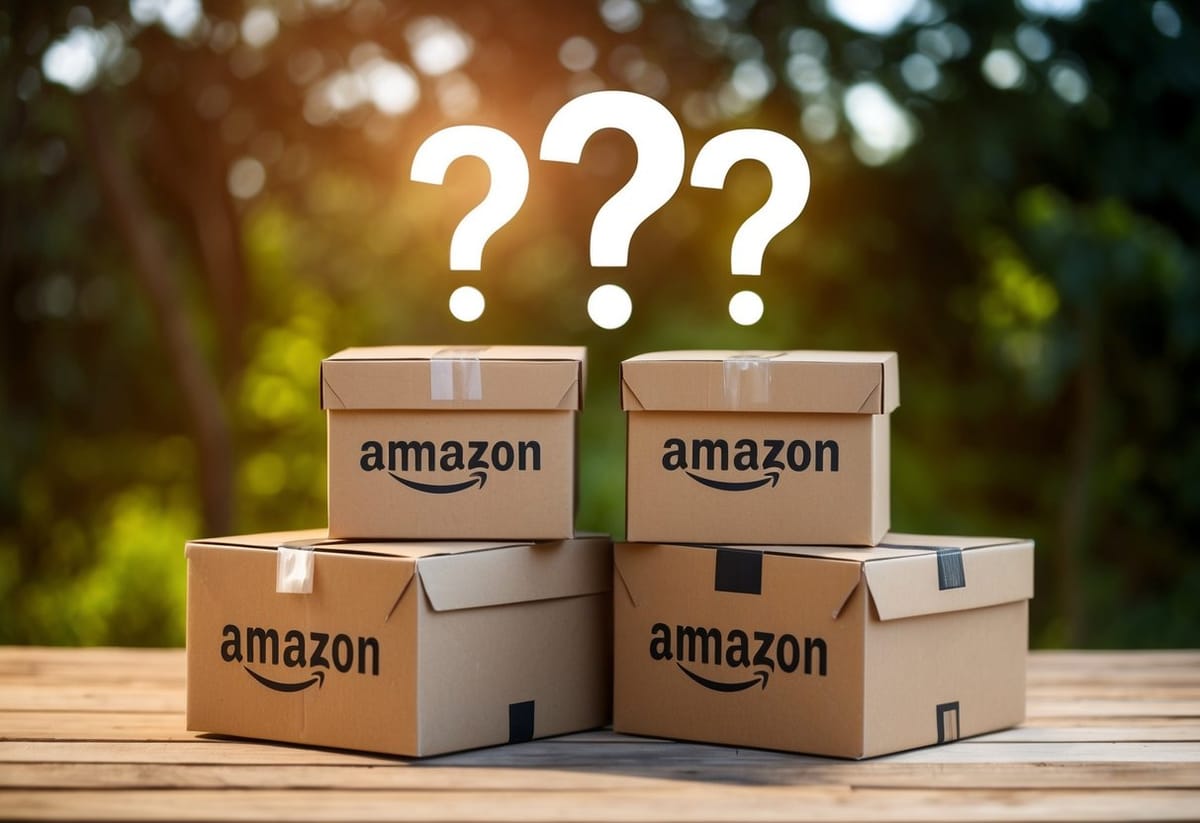
Amazon FBA (Fulfillment by Amazon) has become a popular way for sellers to start and grow online businesses. This program store products in Amazon's warehouses, while Amazon handles shipping and customer service. Many new sellers have questions about how FBA works and how to get started.
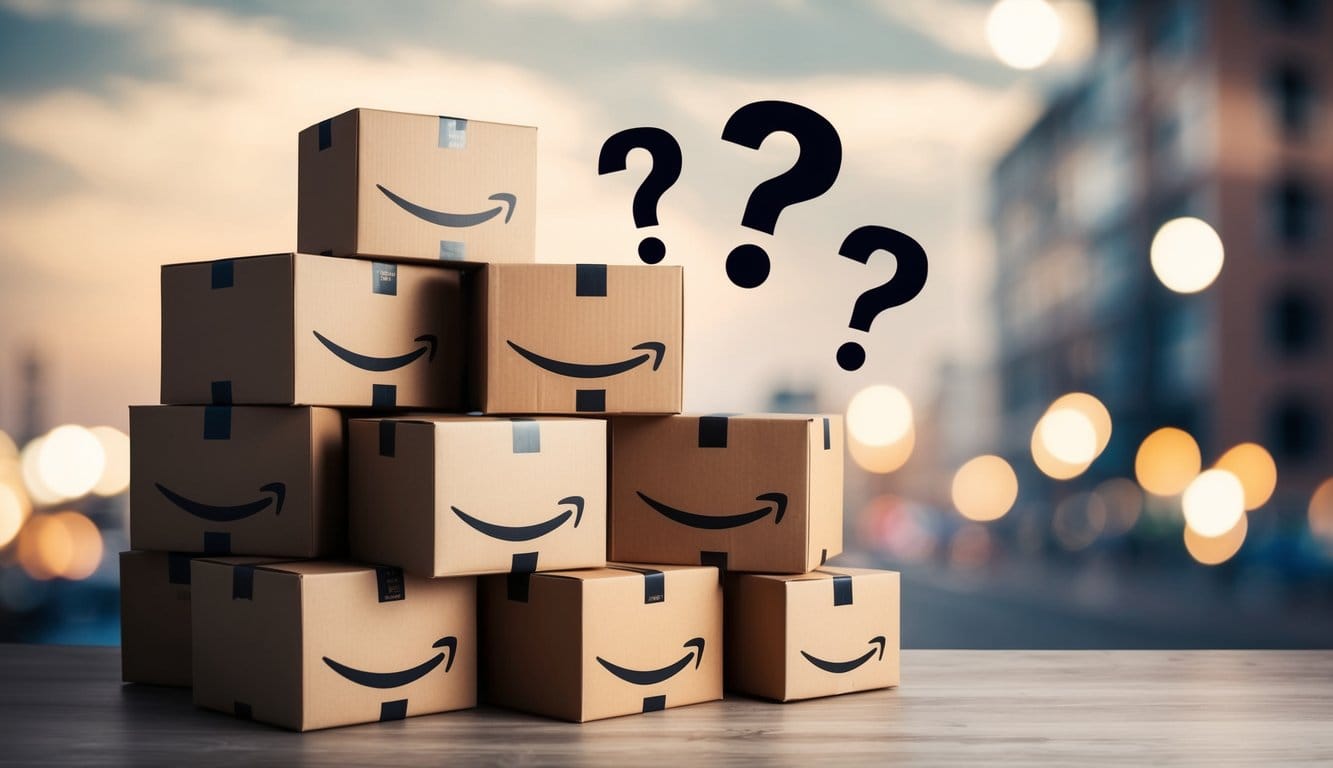
Amazon FBA allows sellers to focus on finding and listing products while Amazon takes care of storage, packing, and shipping to customers. This can save time and hassle, but it also comes with its own set of challenges. New sellers often wonder about fees, inventory management, and how to make their products stand out in a crowded marketplace.
Getting started with FBA involves setting up an Amazon seller account, sourcing products, creating listings, and sending inventory to Amazon's fulfillment centers. Sellers need to learn about Amazon's rules and best practices to be successful. With the right knowledge and strategies, FBA can be a great way to build an online business.
Key Takeaways
- Amazon FBA handles storage, packing, and shipping.
- Sellers need to understand fees, inventory management, and listing optimization
- Success with FBA requires learning Amazon's rules and best practices
Understanding Amazon FBA
Amazon FBA is a powerful service that can boost your online business. It handles storage, shipping, and customer service. This program links closely with Amazon Prime to reach more buyers.
FBA allows you to concentrate on optimizing the product you sell instead of worrying about shipping and customer service.
What Is Fulfillment by Amazon (FBA)?
Fulfillment by Amazon (FBA) is a service where sellers send products to Amazon warehouses. Amazon then stores these items and ships them to customers when orders come in. This system takes care of the whole fulfillment process.
FBA handles packing, shipping, and customer service. It works for items sold on Amazon.com and other sales channels. Sellers pay fees for storage and fulfillment, but save time on logistics. Making it essential for sellers aiming for a successful Amazon experience.
The service aims to make selling easier for businesses of all sizes. It allows to focus on other parts of their business, like finding new products or marketing.
The Benefits of Using Amazon FBA for Your Business
FBA offers several key advantages. It saves time by handling storage and shipping. This lets sellers focus on growing their business instead of packing boxes. This lets sellers focus on growing their business instead of packing boxes or worrying about shipping their product on Amazon
Amazon's large network of fulfillment centers means faster delivery for customers. This can lead to better reviews and more sales. FBA items are eligible for Prime shipping, which many shoppers prefer.
The service also manages customer service and returns. This takes a big task off sellers' plates. FBA can be more cost-effective for some businesses than running their own warehouses.
Can also use FBA to ship items sold on other websites. This flexibility allows sellers to manage multiple products without the hassle of logistics, focusing on marketing and customer engagement instead.
Amazon Prime and Its Impact on Sellers
Amazon Prime is a subscription service offering fast, free shipping to members. FBA sellers can tap into this large customer base. Prime members often look for items with the Prime badge when shopping.
FBA products automatically become Prime-eligible. This can boost visibility and sales. Prime customers tend to shop more often and spend more money on Amazon.
The Prime badge can give products an edge over non-Prime items. It often leads to better placement in search results. This increased exposure can result in more sales.
Prime's popularity keeps growing, which means more potential customers for FBA sellers. The service sets high standards for fast shipping, pushing to use FBA to meet these expectations.
Setting Up Your Amazon Seller Account
Creating an Amazon seller account is the first step to start Amazon selling on the platform. Also often the first step for those with questions about Amazon FBA. This process involves choosing a selling plan, providing business details, and setting up your legal structure.
Creating a Seller Account
To set up an Amazon seller account, visit the Amazon Seller Central website. Click on the "Sign Up" button and follow the steps. You'll need to provide:
• Your business name and address • Contact information • Credit card details for fees • Tax information • Bank account for payments
Amazon may ask for extra documents to verify your identity. This can include a government-issued ID or business license.
Choosing the Right Selling Plan
Amazon offers two main selling plans:
- Individual: Best for sellers who plan to sell less than 40 items per month.
- Professional: Suited for those selling more than 40 items monthly.
The Individual plan has no monthly fee but charges $0.99 per sale. The Professional plan costs $39.99 per month with no per-item fee.
Professional sellers get access to more tools and can sell in restricted categories.
Legal Business Structures for Amazon Sellers
Picking the right legal structure is key for Amazon sellers. Common options include:
• Sole Proprietorship: Simple to set up but offers no personal asset protection. • Limited Liability Company (LLC): Provides personal asset protection and tax benefits. • Corporation: Offers the most protection but is complex to manage.
Many start as sole proprietors and switch to an LLC as they grow. Check local laws to see if you need a business license to sell on Amazon.
Product Sourcing and Listings

Finding profitable products and creating effective listings are key to success on Amazon FBA. These steps require careful research, supplier relationships, and compelling product presentations.
Researching Products with High Demand
Product research is crucial. Start by analyzing market trends and customer needs. Use tools like Jungle Scout or Helium 10 to find products with high demand and low competition. Look for items with steady sales and good profit margins.
Consider seasonal trends and long-term viability. Avoid products with legal issues or high return rates. Focus on items that solve problems or fill gaps in the market.
Keep an eye on bestseller lists and emerging trends. Test small batches before committing to large orders. This reduces risk and allows for adjustments based on real market data.
Working with Suppliers and Wholesalers
Finding reliable suppliers is essential for product quality and business growth. Start by searching on platforms like 1688 or Alibaba. Contact multiple suppliers to compare prices and terms.
Ask for samples to check product quality. Look for suppliers with good communication and fair prices. Build strong relationships with trusted partners for better deals and service.
Consider both domestic and overseas suppliers. Each has pros and cons in terms of cost, shipping time, and quality control. Negotiate minimum order quantities and payment terms that work for your business.
Creating Compelling Product Listings
A strong product listing can boost sales and visibility on Amazon, which are essential for a successful Amazon business. Start with clear, high-quality product images that show all angles and features. Write detailed, benefit-focused product descriptions.
Use relevant keywords in titles and bullet points to improve search rankings. Highlight unique selling points and how the product solves customer problems.
Include accurate product specifications and dimensions. Address common customer questions in the listing to reduce returns. Use A+ content if available to showcase your brand and product benefits.
Regularly update listings based on customer feedback and questions. This improves the listing and shows active seller engagement.
Inventory Management and Logistics
Effective inventory management and logistics are key to success on Amazon FBA. Sellers must balance stock levels, control costs, and plan shipments carefully.
Managing Inventory Levels
Keeping the right amount of stock is crucial. Too little can lead to stockouts and lost sales. Too much ties up cash and increases storage fees.
Should track sales trends and seasonal patterns. This helps predict future demand. Many use inventory management software to automate this process.
It's important to set reorder points for each product. When stock drops to this level, it's time to order more. Fast-selling items may need higher reorder points.
Understanding Amazon's Storage Fees
Amazon charges fees to store products in their fulfillment centers. These fees vary based on size, time of year, and how long items stay in stock.
Long-term storage fees kick in for items stored over 365 days. These can be quite high, so it's best to avoid them.
Fees are typically higher during the holiday season (October to December). Should plan for this by adjusting inventory levels and prices.
Developing an Efficient Shipping Plan
A good shipping plan helps reduce costs and speed up the process of getting products to Amazon's warehouses.
Should group similar items together when shipping. This makes it easier for Amazon to process and store the inventory.
Using the right box sizes and packing materials is important. This prevents damage and helps avoid extra fees for improper packaging.
It's often cheaper to ship larger quantities at once. But this needs to be balanced against storage fees and cash flow needs.
Some use prep centers to inspect and repackage items before sending them to Amazon. This can save time and reduce errors.
Maximizing Sales and Profitability

Boosting sales and profits on Amazon requires strategic approaches particularly in improving your listing on Amazon. Sellers can focus on key areas to improve their performance and stand out in a competitive marketplace.
Analyzing Sales Performance and Metrics
Regular analysis of sales data is vital. It helps identify trends and areas for improvement. Amazon provides many useful metrics.
Key metrics to watch include:
- Conversion rate
- Order defect rate
- Customer reviews
- Return rate
Look at these numbers often. They can show where you're doing well and where you need work.
Use Amazon's reports to track your progress. The Business Reports section offers insights on traffic and sales. The Inventory Performance Index helps manage stock levels.
Customer Experience and Service Excellence

Amazon sellers who focus on customer experience and service excellence gain a competitive edge. Meeting buyer expectations builds trust and leads to positive reviews, repeat purchases, and long-term success.
Providing Stellar Customer Support
Quick response times are key for great customer support. Aim to reply to messages within 24 hours. Use clear, friendly language to address concerns. Offer solutions that go beyond the minimum required.
Set up auto-responses for common questions. This saves time and gives buyers instant info. Create detailed product listings to reduce queries. Include size charts, care instructions, and compatibility details. Quick response times are key for great customer support, especially when handling Amazon FBA questions from buyers
Use Amazon's tools to manage customer communications efficiently. The Seller Central dashboard helps track and respond to messages. Consider hiring staff to handle support as your business grows.
Handling Returns and Refunds Efficiently
A smooth returns process is crucial for customer satisfaction. Set clear return policies that follow Amazon's guidelines. Process refunds quickly, ideally within 2 business days of receiving returned items.
Analyze return reasons to improve products and listings. Address common issues to reduce future returns. For example, update photos if items look different in person.
Offer hassle-free replacements for damaged goods. This can turn a negative experience into a positive one. Keep extra inventory on hand to ship replacements fast.
Building a Trusted Amazon Storefront
A professional storefront builds credibility with buyers. Use high-quality images and consistent branding across listings. Write clear, accurate product descriptions to set proper expectations.
Encourage customer reviews by following up after purchases. Ask buyers to share their honest feedback. Respond to all reviews, both positive and negative, in a professional manner.
Maintain high metrics to earn the "Amazon's Choice" badge. Focus on order defect rate, late shipment rate, and valid tracking rate. These factors influence your store's visibility and customer trust.
Frequently Asked Questions

Amazon FBA sellers often have many questions about fees, listing products, and getting started. Here are answers to some common questions to help navigate the Amazon marketplace.
Q: What are the current Amazon FBA fees and how are they calculated?
Amazon FBA fees include fulfillment fees and storage fees. Fulfillment fees depend on the size and weight of items. Storage fees are charged monthly based on the space items take up in warehouses.
Fees can change, should check Amazon's current fee structure. The total cost varies by product type and sales volume.
Q: What steps are involved in listing a new product on Amazon's platform?
To list a new product, needs to create a product listing. This involves adding product details, photos, and pricing information.
Must choose a product category and provide accurate descriptions. Good quality images and competitive pricing are key for successful listings.
Q: What are the requirements to become a professional seller on Amazon Seller Central?
To become a professional seller, merchants must meet Amazon's performance standards. This includes maintaining high customer satisfaction rates and low order defect rates.
Need a professional selling plan and must follow Amazon's policies. Some categories may require additional approvals or certifications.
Q: How can one start a business on the Amazon marketplace?
Starting an Amazon business begins with choosing products to sell. Sellers need to set up an Amazon seller account and decide on a fulfillment method.
Research is important to find profitable items. New sellers should familiarize themselves with Amazon's rules and best practices.
Q: Are there any free resources or courses available for learning Amazon FBA?
Amazon offers free resources through Seller University. These include video tutorials and guides on various FBA topics.
Many YouTube channels and blogs provide free FBA information. Sellers can also join online forums to learn from other merchants' experiences.
Q: How do I start selling on Amazon FBA?
To start selling on Amazon FBA, first create an Amazon seller account, choose your selling plan, and list your products. Then, prepare and ship your inventory to Amazon's fulfillment centers. Amazon will store, pack, and ship your products as they sell. Don't forget to optimize your product listings and stay on top of your account health to increase sales and succeed in your e-commerce journey.
Q: What are the benefits of using Amazon FBA for my ecommerce business?
Amazon FBA offers numerous benefits for your e-commerce business. It handles storage, packing, and shipping, saving you time and resources. FBA products are eligible for Prime shipping, which can boost your sales. You'll also have access to Amazon's customer service and returns handling. Additionally, FBA can help you scale your business more easily.
Q: How can I improve my account health as an Amazon seller?
To maintain good account health, focus on key performance metrics like order defect rate, cancellation rate, and late shipment rate. Respond promptly to customer inquiries, resolve issues quickly, and maintain accurate inventory levels. Regularly check your Account Health dashboard for any issues and address them promptly. Consistently following Amazon's policies and providing excellent customer service will help keep your account in good standing.
Q: What is Seller Fulfilled Prime and how does it differ from Amazon FBA?
Seller Fulfilled Prime (SFP) is an alternative to Amazon FBA where you store and ship products directly to customers while still offering Prime shipping benefits. The main difference is that with SFP, you handle storage and fulfillment, whereas with FBA, Amazon manages these aspects. SFP gives you more control over inventory but requires you to meet strict shipping requirements. FBA, on the other hand, offers easier scalability and hands-off fulfillment but may have higher fees.
Q: Besides Amazon, what other ecommerce platforms should I consider for my products?
While Amazon is a powerful platform, diversifying can be beneficial. Consider other major marketplaces like eBay, Walmart, or Etsy, depending on your products. For more control, you might want to set up your own e-commerce website using platforms like Shopify or WooCommerce. International marketplaces such as Alibaba or country-specific platforms could also be worth exploring. Remember, each platform has its own strengths and target audience, so research thoroughly to find the best fit for your products and business goals.
Q: How can I increase sales on Amazon?
To increase sales on Amazon, focus on optimizing your product listings with relevant keywords, high-quality images, and compelling descriptions. Encourage customer reviews, use influencer marketing, and consider offering promotions. Additionally, consider expanding your product range and utilizing Amazon Stores to showcase your brand.
Q: What are the main differences between FBA and Seller Fulfilled Prime?
FBA (Fulfillment by Amazon) and Seller Fulfilled Prime are both ways to offer Prime shipping to customers. With FBA, you send your inventory to Amazon's warehouses, and they handle storage, packing, and shipping. Seller Fulfilled Prime allows you to store and ship products from your own facility while still offering Prime benefits. FBA is generally easier but more expensive, while Seller Fulfilled Prime gives you more control but requires you to meet strict performance standards.
Q: What should I do if my Amazon account gets suspended?
If your Amazon account is suspended, don't panic. First, carefully review the suspension notice to understand the reason. Then, create a detailed plan of action addressing the issues and explaining how you'll prevent them in the future. Be honest, professional, and thorough in your appeal. If your initial appeal is rejected, consider hiring an Amazon account reinstatement specialist. Remember, prevention is key, so always strive to maintain good account health.
Q: What are the benefits of using Amazon FBA for my ecommerce business?
Amazon FBA offers several advantages for your ecommerce business, including handling storage, packaging, and shipping of your products, access to Prime customers, and potential for increased sales. It also provides customer service and returns management, allowing you to focus on growing your Amazon FBA business.
Q: How can I protect my brand on Amazon and prevent counterfeit products?
To protect your brand on Amazon, enroll in the Amazon Brand Registry program. This gives you enhanced control over your product listings and access to tools for reporting intellectual property violations. Additionally, consider using Amazon's Transparency program or Project Zero to combat counterfeit products.
Q: How can I effectively manage inventory for my FBA business?
To manage your FBA inventory effectively, use Amazon's inventory management tools to track stock levels and sales velocity. Implement forecasting techniques to anticipate demand, set reorder points, and avoid stockouts or excess inventory. Consider using automated repricing tools to stay competitive and maintain optimal inventory levels.
Q: What is Amazon FBA and how does it work?
Amazon FBA (Fulfillment by Amazon) is a service where Amazon stores, packs, and ships your products to customers. As a seller, you send your inventory to Amazon's warehouses, and they handle the rest. This allows you to focus on other aspects of your business, like sourcing products and optimizing your Amazon sales.
Q: How can I optimize my Amazon product listings?
To optimize your Amazon product listings and improve your search results ranking, focus on these key areas: Use relevant keywords in your product title and description, provide high-quality images, offer competitive pricing, encourage customer reviews, and use Amazon's Enhanced Brand Content if eligible.
Q: What is an ASIN, and why is it important for Amazon FBA sellers?
An ASIN (Amazon Standard Identification Number) is a unique 10-character alphanumeric code assigned by Amazon to identify products in their catalog. It's important for FBA sellers because it helps customers find your specific product and allows you to track your inventory and sales performance. Each variation of a product (e.g., different colors or sizes) will have its own ASIN.
Q: What are the best practices for FBA labeling and packaging?
For successful FBA labeling and packaging: Use Amazon's label service or create your own labels following their guidelines, ensure each product has a scannable barcode, package items securely to prevent damage during shipping, and follow Amazon's product preparation requirements. If you're using custom packaging, make sure it complies with Amazon's guidelines and doesn't interfere with their fulfillment process.
Q: What's the best way to handle customer service as an Amazon FBA seller?
While Amazon handles much of the customer service for FBA sellers, it's still important to be proactive. Regularly check your Seller Central account for any customer messages or issues. Respond promptly and professionally to all inquiries. Address negative feedback quickly and try to resolve issues to maintain a good seller rating. Consider using automated tools to help manage customer communications and feedback.
Q: How do I get started with Amazon FBA if I'm new to selling on Amazon?
If you're new to Amazon FBA, start by researching profitable products to sell. Then, create a Seller Central account and choose the Professional selling plan. Source your products and create optimized listings. Send your inventory to Amazon's fulfillment centers following their guidelines. Learn about Amazon's policies and best practices. Consider taking advantage of Amazon's resources for new sellers, such as their Seller University and the FBA New Selection program, to help you get started.
Q: Can I sell on multiple Amazon stores worldwide with FBA?
Yes, you can sell on multiple Amazon stores worldwide using FBA. This is called Amazon Global Selling. You'll need to create separate Seller Central accounts for each marketplace you want to sell in. Amazon offers programs like FBA Export and Pan-European FBA to help you reach international customers. Keep in mind that each marketplace has its own rules and regulations, so research thoroughly before expanding internationally.
Q: How can I handle inventory to avoid long-term storage fees?
To avoid long-term storage fees, ensure you:
- Monitor Stock Levels: Regularly review your inventory and sales trends to avoid overstocking.
- Use Inventory Management Tools: Tools like Restock Inventory can help forecast future demand and optimize stock.
- Run Promotions: If you have slow-moving inventory, consider running discounts or promotions to boost sales and clear out stock.
- Remove Excess Inventory: Use Amazon’s “Inventory Cleanup” option to remove items that aren’t selling well before long-term fees kick in.
Q: What are the problems of Amazon FBA sellers?
- High Fees – FBA fees can reduce profit margins significantly, especially with storage and fulfillment costs.
- Inventory Management – Overstocking leads to high fees, while understocking causes stockouts and lost sales.
- Strict Policies – Amazon’s strict rules can lead to account suspensions, and competition is fierce.
- Amazon Dependency – Relying only on Amazon risks sudden changes in fees, policies, or visibility.
- Fulfillment Issues – Lost, damaged inventory, and delays can disrupt business.
- Returns – High return rates can hurt profits and ratings.
- Cash Flow – Biweekly payments can cause cash flow problems.
- Counterfeits – Protecting listings from copycats can be a challenge.
- Customer Expectations – Negative reviews can easily hurt sales.
- Platform Changes – Frequent updates can disrupt business operations.
Q: What is good about Amazon FBA?
Amazon FBA provides numerous advantages for sellers looking to boost their eCommerce business. With Prime eligibility, products attract more buyers, enhancing sales potential. The service simplifies logistics as Amazon manages storage, packing, shipping, and customer service, allowing sellers to focus on growth. Access to Amazon's extensive customer base increases visibility and brand credibility. Moreover, sellers can benefit from advanced inventory tracking tools, fulfill orders from other platforms, and leverage Amazon’s promotional features, all while enjoying cost savings from Amazon’s competitive shipping rates. This combination of efficiency and scalability makes Amazon FBA an attractive option for entrepreneurs in the eCommerce landscape.
Q: What are the risks of becoming an Amazon FBA seller?
Becoming an Amazon FBA seller comes with several risks. First, there’s intense competition, which can lead to price wars and reduced profit margins. Additionally, reliance on Amazon’s platform means sellers face account suspension risks due to policy violations or negative customer feedback. Inventory management can also be tricky; overstocking leads to high storage fees, while understocking risks losing sales. Fluctuating market trends and demand can impact sales unpredictably. Lastly, navigating Amazon's fees and complex fulfillment processes requires careful planning, as unforeseen costs can erode profits. Overall, while Amazon FBA offers opportunities, it's crucial for sellers to stay informed and prepared for these challenges.
Ready to Start Selling on Amazon FBA?
Join our mini-course at WAH Academy and learn how to research, source, and launch your first product—without the confusion.
No fluff. No overwhelm. Just clear steps to help you build your FBA business the smart way.
Tap the button and take your first step toward Amazon success today.

